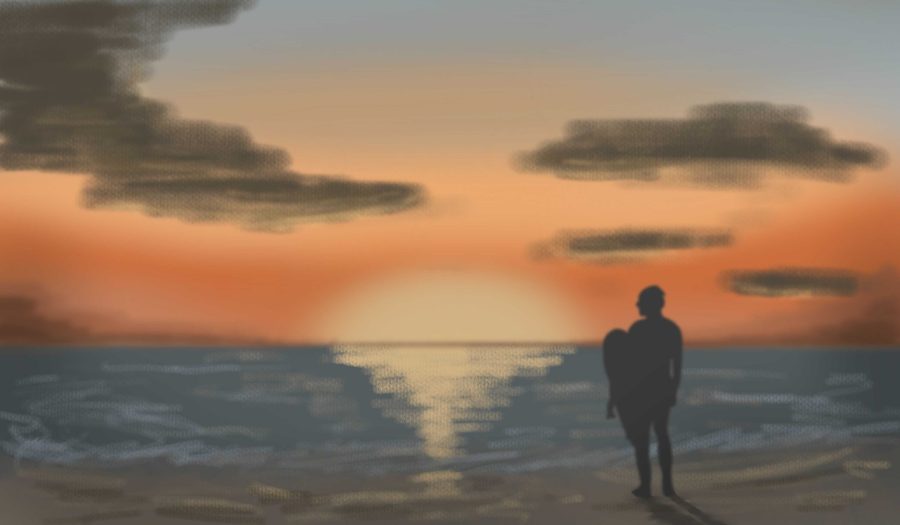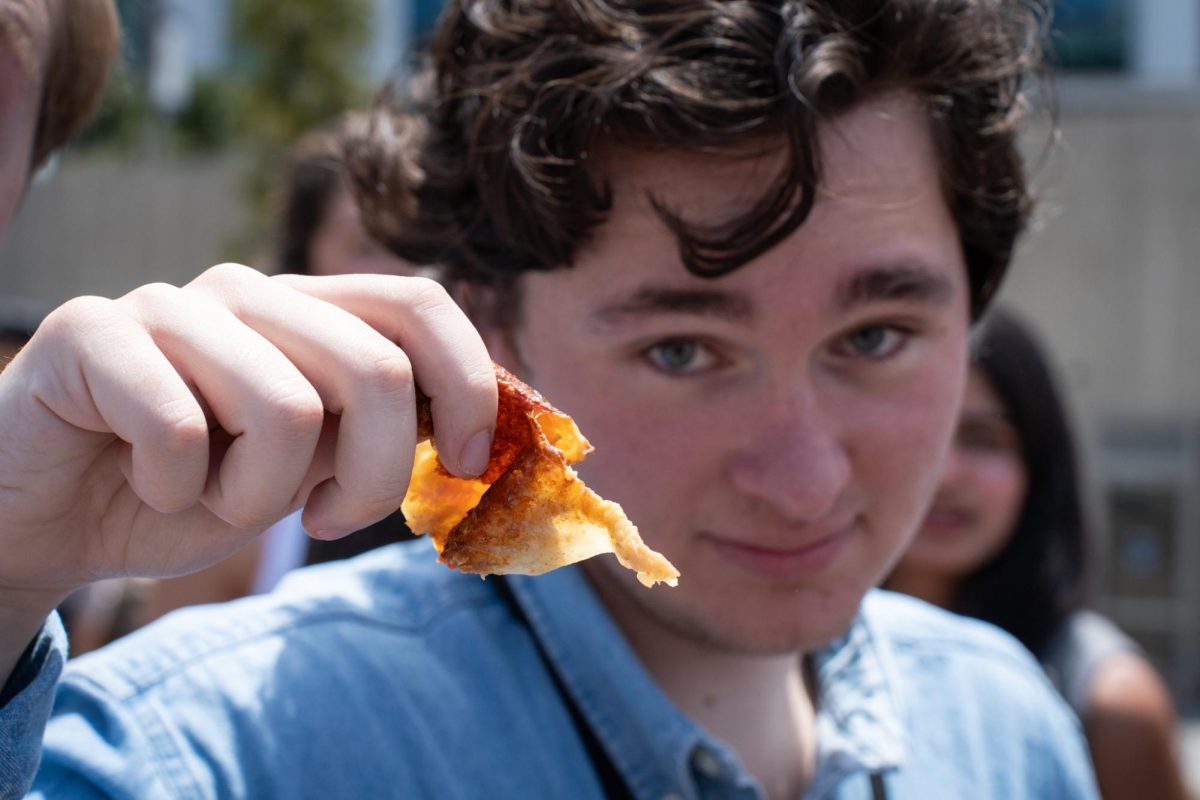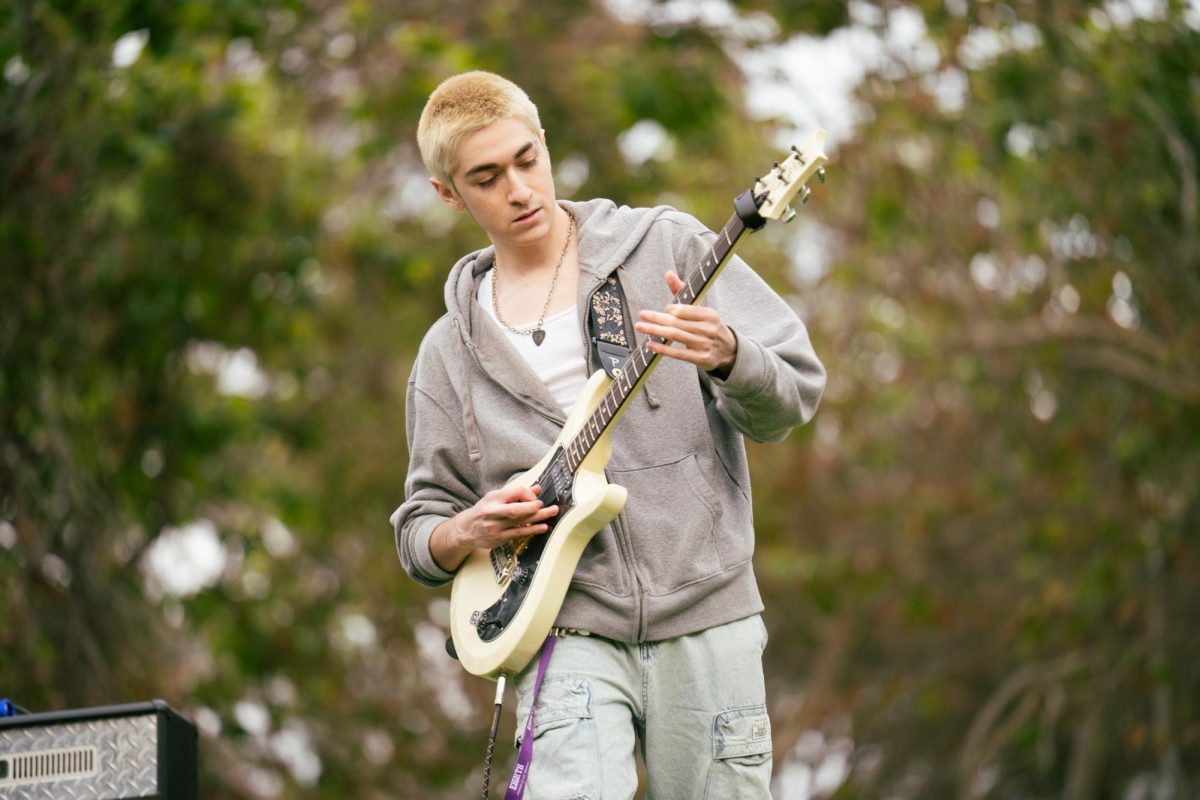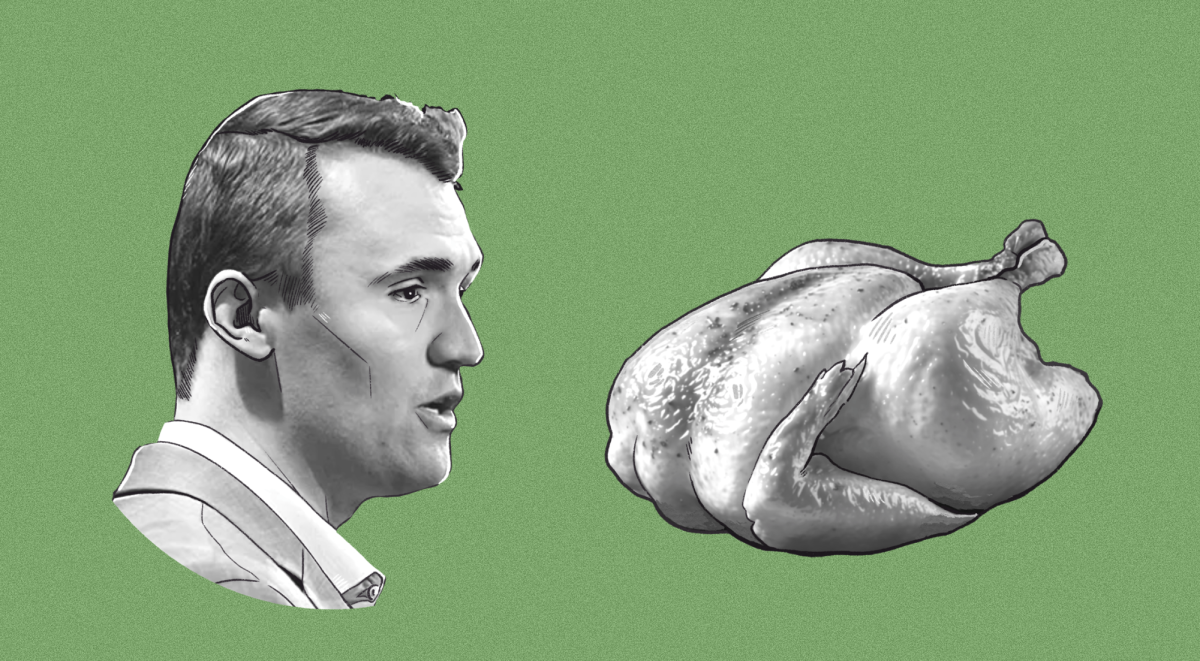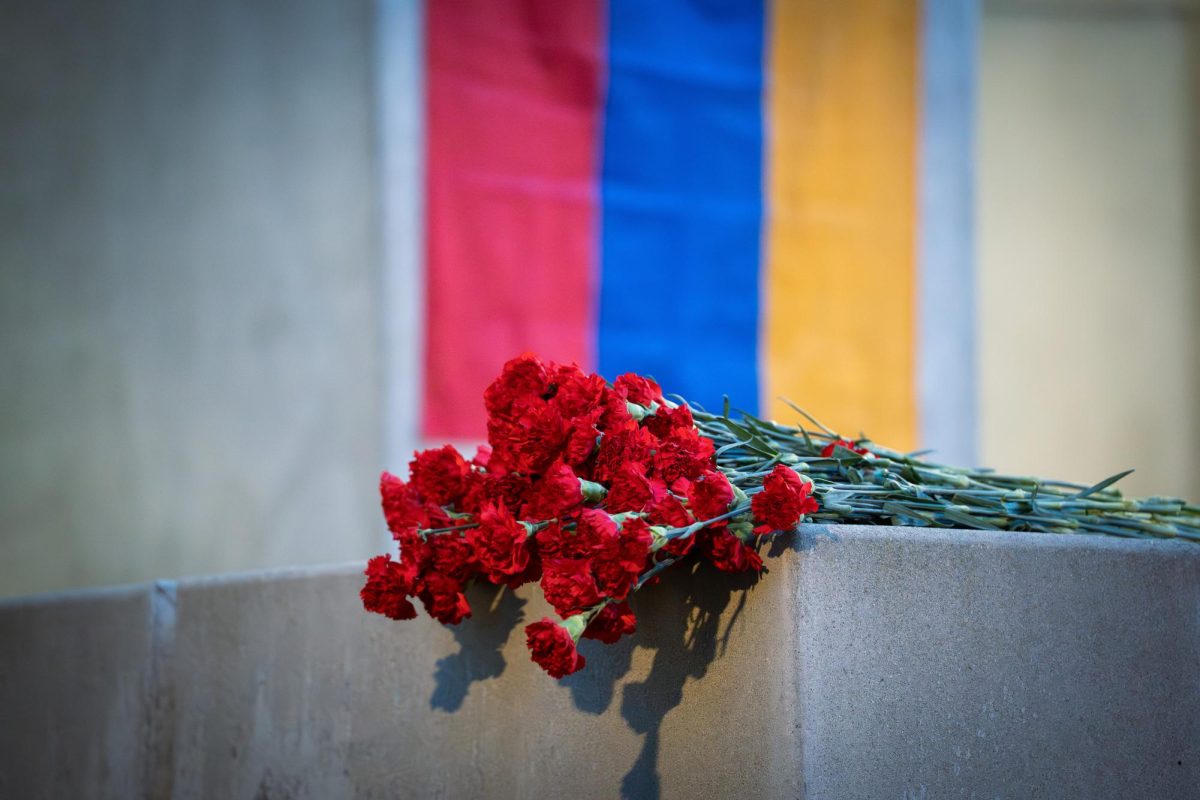The pandemic is winding down and normal life is resuming. Staff Writer Katherine Getchell highlights potential activities to look forward, starting with swimming.
Have you been reaching for the books you read when you were 14 to reread? Watching your most comforting sitcom over and over again even though you’re sick of it? Taking a nap most days?
Those are some of the healthiest forms of escapism available to us right now. Psychology today defines escapism as “a way of avoiding an unpleasant or boring life, especially by thinking, reading, etc. about more exciting but impossible activities.”
There are unhealthy forms of escapism, for example, ones that can trend towards a dependence on drugs and alcohol. But many people have turned to more generally harmless ways of diverting their minds for a brief reprieve from reality. If there were ever a time to lean into escapism a little bit more than usual this would be it, right?
We have all lived very different quarantines — that goes without saying. But we have all shared this experience of loss, however big or small; everyone had something taken from them by this pandemic.
So many people have lost loved ones, and others have lost out on opportunities and experiences. None of these losses cancel each other out. Whatever you are grieving, you are not alone in that grief.
The COVID-19 pandemic is far from over, but with 95.9 million people fully vaccinated as of May 2nd, the United States is entering a new phase of the pandemic, whatever that looks like.
When it looked like rigid social distancing would last indefinitely and vaccines might not be available here for years, trying to picture the future felt like staring into an abyss. But now some of us may see a cautious optimism hovering at the edge of our peripheral vision.
Maybe we can start to daydream again about what’s next, what adventures we want to go on, the new experiences we’ll have, and the new people we’ll meet. While some sit in half-vaccinated limbo, stuck planning or waiting to plan the next adventure they’ll take, escapism may just be the thing that holds us over in the meantime.
For those of us still in the San Diego area, we might take for granted all the adventures the ocean holds. Luke Nowakowski-Krijer, who graduated from UC San Diego with a degree in computer engineering in Fall 2020, is an avid surfer.
Everyone has different criteria for what constitutes an adventure. Nowakowski-Krijer explained that from his perspective for something to be an adventure there has to be something uncertain about it, and you have to make peace with the fact that some part of the experience is completely out of your control.
“I mean, there has to be some exploration of the unknown,” Nowakowski-Krijer said. “And then like with that, I think everything that comes from that like the feeling of danger or fear or whatever, you know, you accept that … risk.”
The adventure I got to hear about from Nowakowski-Krijer was a day he went surfing at a new spot, at Sunset Cliffs with his friend Alexi last name?. The best spot to surf at Sunset Cliffs is tricky to get to because it doesn’t have any easy beach access; they couldn’t just walk down to the water and hop in. First, they had to climb down a cliff.
“Like you either have to like jump off some f****** rocks or like climb down some trail to get down and there’s literally a line that you have to like, wrap your hand around in this rope and we all have our surfboards so it’s kinda sketchy,” Nowakowski-Krijer said.
The bucket brigade-type solution devised by Luke to move both surfers and surfboards down the cliff revolved around taking turns handing their expensive boards down to each other off the cliff. This seemed complicated and riddled with risk. Not to mention the integrity of this rope they pointed to as a safety measure sounded questionable at best.
Luke argued that“It’s kind of not as epic as it sounds” but also admitted that a small slip would mean, “you go straight down. Yeah, no, then you’re f*****.”
At the bottom of those cliffs, a set of rotting stairs leads down to a dry reef which serves as a kind of a platform for surfers to enter the water and paddle out past the break.
Nowakowski-Krijer categorized this particular day was a pretty average surf day, “four feet, five feet, it was probably shoulder to overhead.”
It’s worth clarifying that the average height of these waves, according to Nowakowski-Krijer, were shoulder to overhead. That is not from the vantage point of floating on top of the water, but measured from when he’s standing on his board actually surfing the wave. So the top of the wave behind Nowakowski-Krijer, who is six feet tall, is at his shoulder to above his head in height.
Those waves have incredible force to them. From the vantage point of someone just bobbing along the surface, the peaks would seem to be towering over them, blocking out the horizon as they rapidly approach.
Nowakowski-Krijer also described this surfing spot as fickle because with the position of the reef, the changes in the tide could trap an absentminded surfer between the rocks at the base of the cliffs and a breaking set of waves.
Being crushed by the occasional wave is just a part of surfing, the moment Nowakowski-Krijer realizes he’s caught in a bad spot his internal monologue reads along the lines of:
“So you just say ‘Oh, f***,’ and you just let your just get more loose like you try to just like, let it roll you around,” Nowakowski-Krijer said. “Or you grab your board and you hang on to it for dear life! Because, like, it’s your flotation device.”
Here, Nowakowski-Krijer’s definition of an adventure fits perfectly, because when he gets thrown by these waves he doesn’t pack up and go home, he keeps surfing. Even as he was describing all the different ways different waves can attack a person and admits that it can be scary, he didn’t even pose heading back to shore as an option.
“I mean, but it happens so much you get kind of used to it,” Nowakowski-Krijer said. “You get super used to just getting absolutely destroyed. And it’s just the way of it. It’s like yeah, it literally, it stops, it actually stops being like a traumatic experience. And it’s just an experience and then it’s just fine.”
He’s echoing his own definition so clearly — how on an adventure you have to accept unknowns, and surrender to those risks.
“Well, like the first, the first times you’re getting tossed around you’re like you’re clamoring for air,” Nowakowski-Krijer said. “You’re like pushing all your muscles like every part of you is straining, you’re choking. you don’t even know which way is up like you have no idea. But like the other times it’s just like you let it toss you and the philosophy is just like the path of least resistance just kind of let it do its work and chill.”
Staying calm while you are being actively shown how much more powerful the ocean is than you and how insignificant you are to nature is a skill in itself. Pro surfers put themselves in situations orders of magnitude riskier than the one Luke described.
“No, it’s like you like fucking the big wave surfers who like they, they go to like, you know, places like Nazarene, Portugal, and like, those are like the big waves that will like, not only kill you on impact, but like, put you through the wringer for like, a minute,” Nowakowski-Krijer said.
Big wave surfers surf waves that are at least 20-feet tall. When Luke talks about being put through the wringer, he is describing the force of the wave that pins these surfers down, meters from the surface, regardless of how hard they swim upwards and despite the flotation vests they wear.
“Yeah, they have training where they … enter a meditative state to, like, slow down their body and like, calm down. So they learn how to do that,” Luke said.
Learning to do that to some degree, to stay calm and relaxed even in the chaos of a wave is a skill Nowakowski-Krijer cultivates every time he surfs. He has to because the coin he flips every time he goes for a wave has two sides: the joy of catching it or the disaster of being caught in it.
Nowakowski-Krijer has run the numbers and has decided this risk is worth the reward. He spoke of the elation of simply riding each wave, the triumph that is correcting your balance just in time to save yourself from being tossed off and chewed up by the whitewater.
The adrenaline of paddling as fast as you can, as hard as you can, arms just churning through the water to try and match the momentum of a swell and surprising yourself when you actually catch it. The satisfaction of perfecting a smooth pop-up, when you go from laying on your board to suddenly standing right at the cusp of the wave, a feat of balance and coordination that may become easier with practice but is never easy.
Along with the sheer joy of surfing, Nowakowski-Krijer explained how much he values challenging himself, and seeing improvement and always finding new ways to leave his comfort zone. He talked enthusiastically about learning to surf with different boards, in different conditions, and learning how each of those boards cuts through the water in a unique way.
Despite being sidetracked by his genuine passion for surfing as a whole, Nowakowski-Krijer returned to the original storyline he began about this particular day at sunset cliffs.
The real trouble began when Nowakowski-Krijer paddled back into the reef where they had entered the water. They had not realized how much the tide had risen; the platform of rock which was previously a safe landing zone was no longer sheltered by elevation from the crashing waves.
“So the waves are now breaking right where we are,” which person? said. “So we get the direct brunt of it. So we get up, we like to get our bearings slightly and we’re like, oh, shit. Like there’s like a wave.”
Nowakowski-Krijer described that moment of looking at Alexi and Alexi looking back and then both of them looking at the massive wave barreling towards them. That moment of stillness they shared, the first second of paralyzing realization and subsequent terror, for Nowakowski-Krijer, was broken by one thought that forced him into action:
“I thought I’m just gonna I’m gonna book it as fast as I can to those stairs so I can make it as high as I can.”
Knowing that Nowakowski-Krijer survived this ordeal, it is a little funny to imagine him trying to run at breakneck speed, running for his life essentially, barefoot across a slippery and sharp reef with his surfboard either tucked under one arm or held with both arms above his head.
Also, note that Luke also has a bit of an ‘every man for himself’ mindset here; he wasn’t looking back to see if Alexi made it. There wasn’t time for that.
“So then the water like comes and just f****** like wipes us off our feet like we’re f****** you know, like bowling or something,” Nowakowski-Krijer said. “I got pushed into the wall. We kind of just dropped and then I’m we’re just like, we have to regain our balance and f****** go because there’s more coming because it was like a set of waves.”
When they managed to reach the safety of the stairs and start climbing back up the cliff, they didn’t even address how close of a call that just was, “we don’t even really acknowledge how sketchy that was. We’re in shock we don’t acknowledge what just happened. ”
As Nowakowski-Krijer appeared over the edge of the cliffs, Nowakowski-Krijer’s leg bleeding from where he was raked across the reef, a crowd of onlookers there to watch the sunset appraised them visibly impressed. They misinterpreted Nowakowski-Krijer’s shock as nonchalance and collectively gave a nod of respect.
“Like, they thought we were cool, but we were just terrified at that moment,” Nowakowski-Krijer said.
There’s so much to gain from having adventures. We gain the understanding that people can perceive the same event completely differently. We start to grasp how much we still have to learn about the things we think we know all about. Adventures can be an opportunity to challenge ourselves and measure ourselves.
When things return to “normal” it won’t mean that all the problems we faced before COVID-19 will cease to exist. But we will have the chance to build new realities for ourselves that we don’t need as much escape from. Until then, we can immerse ourselves in stories that hopefully inspire the adventures we embark on in the future.
Art by Andrew Diep for the UC San Diego Guardian.


